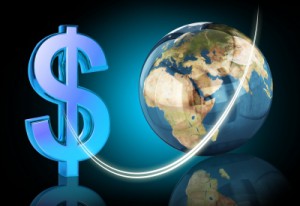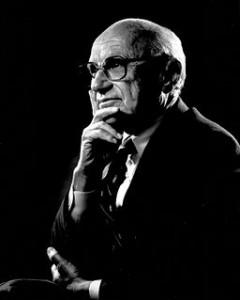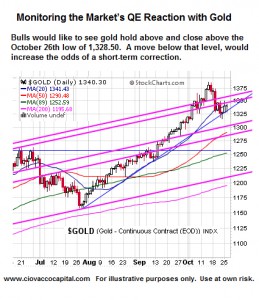Will the U.S. Dollar Be Replaced as the World's Reserve Currency? Foreign Exchange Reserves are foreign money held by International banks for use in international trade and in an effort to diversify their holdings and hedge against the inflation of their own currency. The most common items bought and sold with their foreign exchange reserves are oil and gold. Up until 1944 the asset of choice was gold and it was used as the medium of exchange between countries to settle their debts. But in July 1944, delegates from the 44 Allied nations gathered in Bretton Woods, New Hampshire., and made the U.S. dollar the reserve currency of the world. At that time, the dollar was pegged at $35 per ounce … [Read more...]
What is the Difference Between Micro and Macro Economics?
Microeconomics vs. Macroeconomics- Economics can be described as the social science that examines how people use limited resources to produce, distribute, and consume goods and services to satisfy their unlimited needs and desires. Although microeconomics and macroeconomics are not the only disciplines and paths of specialization to exist within the broader context of economics, these two related, tightly bound, but nonetheless disparate fields are likely the most prominent. Microeconomics and macroeconomics do exactly what their names indicate. Microeconomics focuses on close-up snapshots of people, businesses, and non-profit organizations acting within economies while macroeconomics … [Read more...]
What is the Fiscal Cliff and How is it Affecting the Economy
The fiscal cliff that is the current hot topic in the news is a combination of automatic spending cuts and tax hikes that are scheduled to go into effect at the end of 2012 and the beginning of 2013. The spending cuts were triggered when congress failed to reach a deficit reduction agreement during last years debt ceiling debate. The tax increases are also automatic because Congress failed to make the "Bush Tax Cuts" permanent opting instead for a more politically expedient temporary tax reduction. In other words, they "kicked the can down the road" and it landed at the end of 2012. Perhaps they were hoping the Mayans were right and the world would end before they had to deal with the … [Read more...]
What is Quantitative Easing?
Is Quantitative Easing Money Printing? Quantitative Easing is often referred to as "money printing" or a way for the government to increase the money supply. According to Wikipedia, quantitative easing is different from the typical method whereby governments buy treasury debt to increase the money supply. In QE1 when the market was panicked, and banks didn't want to buy government bonds, the central bank implemented "quantitative easing" by purchasing relatively worthless financial assets (like mortgage backed securities) from banks and giving them new electronically created money. So this is straight forward money printing compared to the more round about traditional method. Thus … [Read more...]
Five Things You Need to Know About the Economy
By David Galland, Managing Director, Casey Research At any point during the recent negotiations in Washington over the debt, did you seriously think for even a second that the U.S. was about to default? Of course, in time the U.S. government (along with many others) will default. However, they are highly unlikely to do so by decree or even through the sort of legislative inaction recently on display. Rather, it will come about through the time-honored tradition of screwing debtors via the slow-roasting method of monetary inflation. Yet most people still bought into the latest drama put on by the Congressional Players – a troupe of actors whose skills at pretense and artifice might … [Read more...]
What is the Federal Reserve – Part 3
Money, Credit and the Federal Reserve Banking System Conquer the Crash, Chapter 10 By Robert Prechter How the Federal Reserve Has Encouraged the Growth of Credit Congress authorized the Fed not only to create money for the government but also to “smooth out” the economy by manipulating credit (which also happens to be a re-election tool for incumbents). Politics being what they are, this manipulation has been almost exclusively in the direction of making credit easy to obtain. The Fed used to make more credit available to the banking system by monetizing federal debt, that is, by creating money. Under the structure of our “fractional reserve” system, banks were authorized to employ … [Read more...]
What is the Federal Reserve – Part 2
This is Part II of our three-part series "Robert Prechter Explains The Fed." In part 1 we saw how Central Banks came into being and money went from something tangible and of value like Gold or Silver to paper backed by Gold to paper backed by nothing. You can read Part I in "What is the Federal Reserve - Part 1" -- and come back later this week for Part III. "Let's attempt to define what gives the dollar objective value. As we will see in the next section, the dollar is 'backed' primarily by government bonds, which are promises to pay dollars. So today, the dollar is a promise backed by a promise..." … [Read more...]
What is the Federal Reserve – Part 1
Do you really know What a Dollar is? Or how the FED controls interest rates? What is quantitative easing? Or (QE2)? Or monetary stimulus? For answers, let's turn to someone who has spent a considerable amount of time studying the Fed and its functions: EWI president Robert Prechter. Today we begin a 3-part series that we believe will help you understand the Fed as well as he does. (Excerpted from Prechter's Conquer the Crash and the free Club EWI report, "Understanding the Federal Reserve System.") Here is Part I. … [Read more...]
How The FED Prints Money- Part 4
This is part 4 in the video series on the effects of Quantitative Easing by Chris Ciovacco the Chief Investment Officer for Ciovacco Capital Management. To see the other parts How the FED Prints Money, How the FED Prints Money – Part 2, How The FED Prints Money- Part 3 … [Read more...]
How The FED Prints Money- Part 3
Last week we looked at who gets all the money the FED prints and before that we looked at the process the FED uses to get the money "Out of Thin Air" and into the hands of people who can spend it. Today we are going to look at what is "Quantitative Easing" well it sounds cool anyway... ~editor What is Quantitative Easing? Fed’s Perspective & Writings Part 3 in a 6 Part Video Series on Quantitative Easing A Wall Street Journal article (10/27/10) on quantitative easing (QE) hints the Fed will take a middle of the road approach in terms of the size and duration of QE2. As we would expect, the stock and commodity markets’ initial reaction is negative. A middle of the road … [Read more...]




